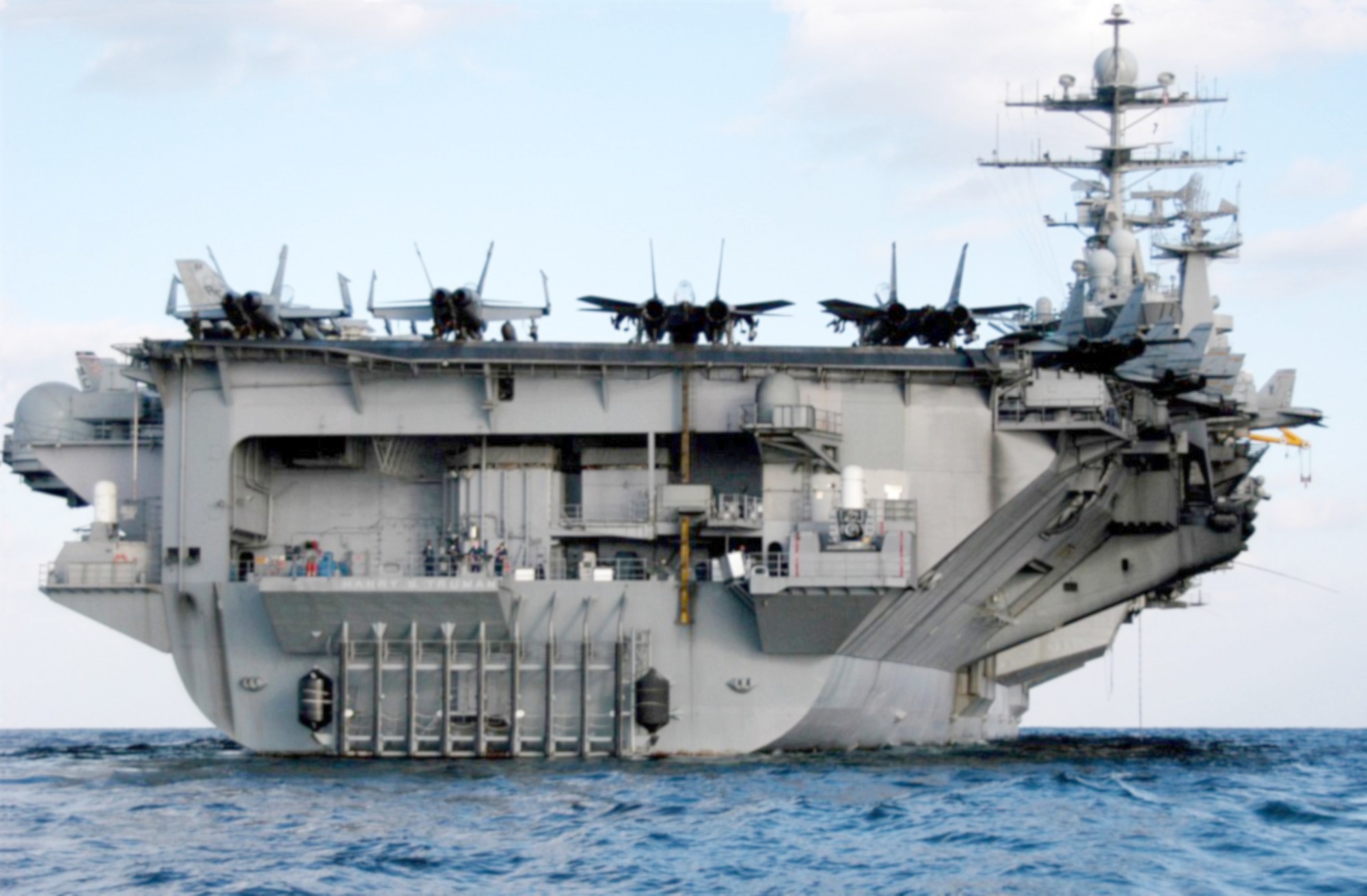The US has deployed no aircraft carriers in the Persian Gulf region for over five months now and has also reduced the number of its warships in regional waters, information and data available on the US vessels’ navigation and remarks by the American officials shows. The US Navy announced on March 27 that USS Theodore Roosevelt (CVN-71) aircraft carrier had left the Persian Gulf for the Pacific Ocean.
The US Navy has had no aircraft carrier in the region since March. US defense officials told VOA that the guided-missile destroyer USS The Sullivans was inside the Persian Gulf, and that several ships were stationed at Bahrain, though.
According to data and information available on the US warships’ navigation, after Roosevelt carrier and its accompanying destroyers left the Persian Gulf, the Harry S. Truman Carrier Strike Group was headed to the US Navy’s 6th Fleet’s area of operation to be finally deployed in the Persian Gulf.
The fleet, including Truman and her guided-missile escorts ― the cruiser Normandy and destroyers Arleigh Burke and Forrest Sherman ― were due to support the NATO forces in the Mediterranean for a while and then head to the Persian Gulf after passing through the Suez Canal. But only three months later, July 17, the US army announced that Truman has returned to Norfolk in Virginia, to be the first US carrier in the past decade which has been sent to Western Asia but not deployed in the Persian Gulf.
Seven-month carrier tours had become routine, but in written statements to the House Armed Services Committee in February and April, Defense Secretary James Mattis and Marine Gen. Joe Dunford, the chairman of the Joint Chiefs of Staff, told lawmakers they wanted to implement what’s become known as their “Dynamic Force Employment” concept.
It calls on Navy warships and other military units to become more agile and less predictable in their global deployments, leaving potential foes uncertain about troop movements while reassuring allies that America’s armed forces will continue to patrol potential hotspots.
“The National Defense Strategy directs us to be operationally unpredictable while remaining strategically predictable. As such, select units from the USS Harry S. Truman Carrier Strike Group will return to Norfolk, Virginia, this week,” said Adm. Christopher Grady, commander of Norfolk-based US Fleet Forces, in a press release in July.
Even, the US amphibious warship USS Iwo Jima (LHD-7) which had been deployed in the Persian Gulf on June 14 to compensate for the absence of carriers left the region several weeks ago and berthed in Mayport on Friday. These developments mean that the US for the first time in the past few years has not deployed any carriers in the Persian Gulf for five months and limited its naval presence in the region to deployment of destroyers and missile-launching warships.
Last week, Admiral John Richardson, chief of naval operations, confirmed the issue in an interview with the VOA. The decrease in the US naval presence in the Persian Gulf is not limited to the carriers and the number of warships and destroyers have also reduced in the region.
The latest information (August 6) about the US naval deployment shows that at present 13 warships are stationed in the US navy fifth fleet’s zone of mission which includes the Persian Gulf, the Red Sea, the Arab Sea and a part of the Pacific Ocean.
This is while 19 warships were deployed in the region on March 19, one week before Roosevelt left the Persian Gulf. Also, data indicates that 20 to 25 warships were deployed in the region in the past two years.
The US officials have not explained about their decision to decrease deployment in the Persian Gulf but the US naval forces’ performance shows that they have changed their behavior in the region in the past few months despite US President Donald Trump’s harsh positions. It seems that the decrease has lowered the cases of unprofessional behavior by the US naval forces and their zero confrontation against the Iranian forces in the Persian Gulf is
‘Courtesy FARS news agency’.


